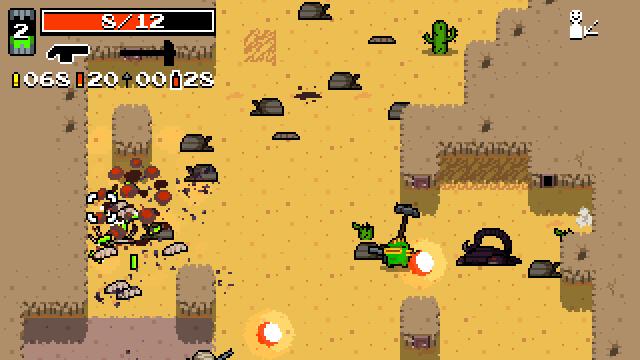The temperature is rising, which means it’s probably a good time to sit in the sun and peruse Worth Reading, your guide to the week’s best games writing.
Hey, You Should Read These

Some of the most popular games to stream seem to have happened by coincidence, but it won’t surprise me if we start seeing a whole line of games explicitly made with streamers in mind. (It’s arguable this has already happened with the horror genre, even if the original Five Nights at Freddy‘s was a happy accident.) It’s interesting to see what elements — specifically, UI — developers are paying closer attention to, based on how both streamers and viewers react.
Here’s an excerpt from the piece:
“Games in established genres, especially genres with arcade roots, or games from companies with a real focus on UX already do a great job of this a lot of the time.” observes Saltsman. “If you look at Street Fighter, a game that was designed to be easily noticed in an arcade setting, and then designed to be grokkable by a crowd around the cabinet, you can see all the affordances that enable this: big obvious health bars, big obvious super meter, big obvious level timer, obvious spatial metaphor for whether one player is cornered and pressing their advantage or not. You can read the whole game state and a lot of the past and future of the game in a single screenshot. You need a bit of game grammar to do this, but not a lot.’
“And I think the big EVO tournament each summer shows that Street Fighter is a game that streams really well, and the game’s huge audience and complete lack of in-game tutorials are all good indicators that generally in-game clarity/comprehension for that franchise is quite good. The growing playerbase for competitive fighting games over the last few years is a testament to streams, but also to the game state being so easy to read.”

There’s no easy way to deal with arseholes on the Internet, especially with an elevated profile like Julia Hardy’s. But I’m fascinated by the various coping mechanisms, especially when it comes to raising awareness about what it’s like to live with this abuse on a daily basis. Hardy breaks down why both responding and ignoring didn’t work for her, but she found a middle ground in sharing the harassment with the world. She’s hardly alone in dealing with this bullshit.
Here’s an excerpt from the piece:
“One of the worst elements is that people often don’t believe that sexist abuse is something that actually happens in the world. ‘You’re imagining it’ is one common reaction, or ‘I’ve never seen anything like that so you must be mistaken’. Nothing is more rage-inducing than someone insinuating that you’re crazy or that you’re twisting things. This disbelief becomes so frequent that you start to doubt your own mind.
At least on the internet, you have some physical proof that it’s actually happening. It’s one thing to suggest that I’ve misheard or misunderstood something said to me on the street, but when someone has written “fuck her right in the arse” in a YouTube comments section, it has a certain clarity to it. Even the most staunch disbeliever has to admit there’s little ambiguity going on here.
Then came Twitter, which really cranked things up in terms of the terror around your own public persona. Suddenly, people could seek you out and tell you these things directly, as though compelled by some primal force to share their observations on your clothing, looks or demeanour; as though they had some great truth to impart.”
If You Click It, It Will Play
Oh, And This Other Stuff
- Shaun Kitchener used trainer quotes from Pokemon Red to speak with potential suitors on Tinder, and it’s as amazing as you might expect.
- Sarah Rodriguez pushed back on the misguided notion that female streamers have inherent advantages on Twitch and are gaming the system.
- Christian Nutt compiled a list of Mario Maker stages made by game developers, and I’ve immediately made note of every single one.
- Kevin Kguyen called the way Hideo Kojima talks about “big ideas” in the Metal Gear games as misguided and sophomoric. Ouch.
- Shaz Greenwood explained why Early Access worked for Broforce and what developers (and players) can learn from their experience.
- Cara Ellison interrogated the many meanings behind The Beginner’s Guide, informed by the fact that she played an early version last year.

Comments